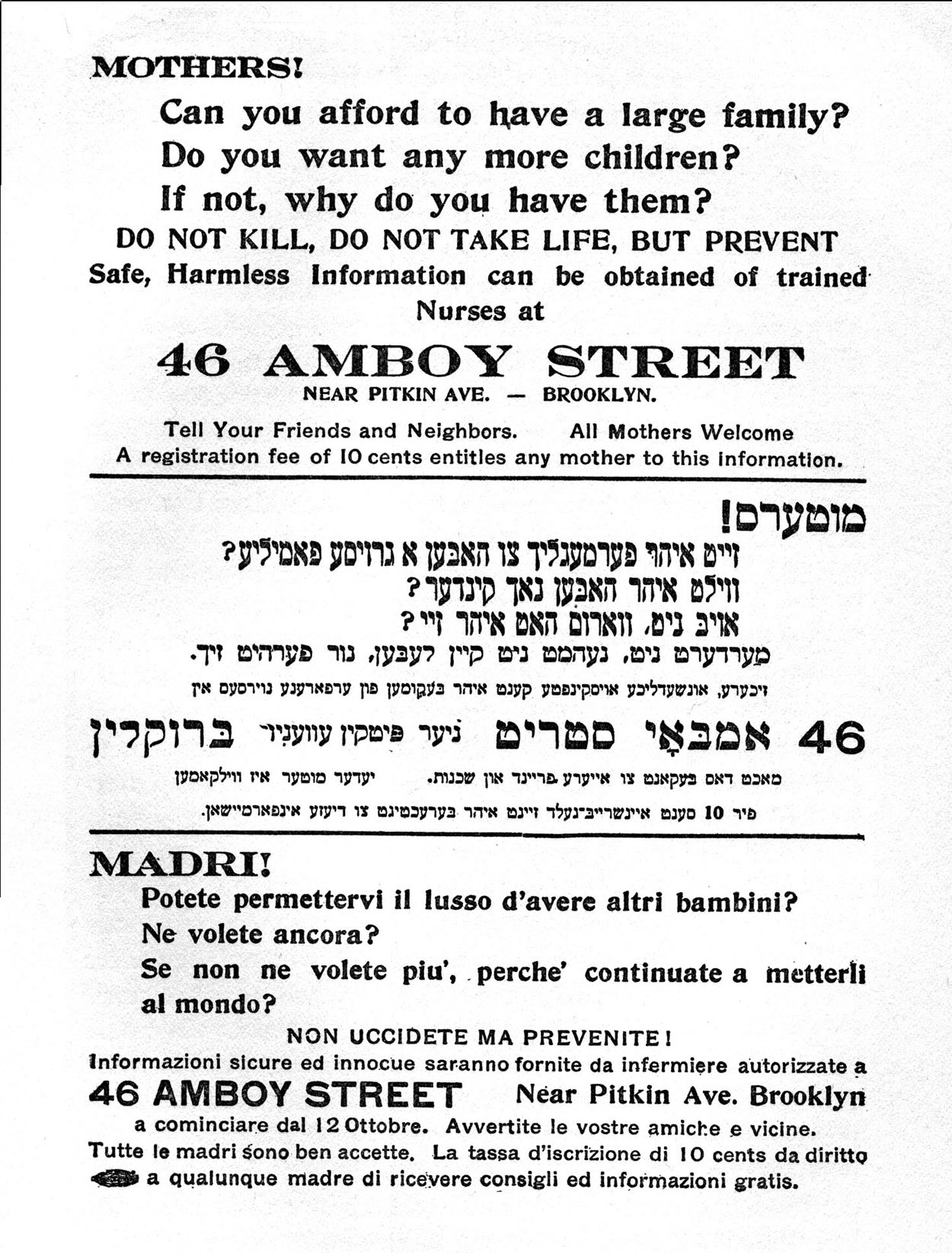Background
In the early twentieth century, birth control was a controversial issue. Federal obscenity laws made it illegal to share or sell birth control information and devices, leaving many women uninformed about their own bodies. Middle- and upper-class men and women were more likely to be educated and chose to have fewer children. But poor families who had less access to education continued to struggle with frequent unplanned pregnancies.
A new child meant another mouth to feed. For poor married women, pregnancy was not a time to rest. In addition to daily housework and childcare, many of them continued to work. After spending most of their adult years pregnant, women suffered from failing health and often died young. Many pregnant women attempted illegal and highly dangerous abortions that often resulted in permanent damage or death.
Activists like Margaret Sanger believed that women deserved the right to limit pregnancy and control their own bodies. In October 1916, she joined with Ethel Byrne and Fania Mindel to open the nation’s first birth control clinic. They chose the poor Jewish and Italian neighborhood of Brownsville, Brooklyn. They gave out information and contraception to any married woman who came in for help. The clinic served 488 women in ten days before the police shut it down. All three women were arrested for distributing illegal materials. Many Brownsville families testified in support of the women, but the prosecutor used their testimony as evidence of illegal behavior. Fania Mindell was fined. Ethel Byrne was imprisoned for thirty days. She went on hunger strike to raise awareness for the birth control movement, and prison guards force-fed her through her nose. Margaret Sanger was also imprisoned for thirty days and spent her time answering “fan” mail to garner attention. When she appealed her case in 1918, the court found her guilty again. However, the court ruled that doctors in New York State could prescribe contraception to married women. This was a big step forward, but the strongest laws preventing access to birth control did not change until decades later.
About the Image
This flyer was distributed by Margaret Sanger, Ethel Byrne, and Fania Mindell before the opening of the Brownsville clinic. It repeats the same information in three languages: English, Yiddish, and Italian. The flyer was effective. There was a long line of women waiting for the clinic when it opened on the first day.
Vocabulary
- contraception: A device used to prevent pregnancy.
- force-fed: A painful process in which a person who is on hunger strike is forced to eat via a tube in their nose.
- hunger strike: An activist strategy that involves refusing to eat to gain attention and influence others.
- obscenity laws: Laws that defined morally acceptable behavior; these laws often included restrictions on sex, pornography, and birth control.
Discussion Questions
- This flyer is in English, Yiddish, and Italian. What does this tell us about the Brownsville neighborhood and who the three women hoped to serve through their clinic?
- How does this flyer make an argument for married women to use birth control? Do you think it is an effective argument? Why or why not?
- Many women knew that seeking birth control help was illegal, and yet they were eager to visit the clinic and testify at the very public trials that followed. What might this tell us about the women seeking help at the clinic?
- Historians argue that Margaret Sanger and her colleagues opened the clinic to do more than help women in Brownsville. What might their objectives have been?
Suggested Activities
- APUSH Connection: 7.4: The Progressives
- AP Government Connection: 3.9: Due process and the right to privacy
- Raising a family and working for wages was a balancing act many women faced. Connect this advertisement to the images of mothers at work by Lewis Hine.
- Connect the activism of Margaret Sanger and her colleagues to the Supreme Court opinion in Muller v. Oregon, which stated that women’s reproductive rights were a matter of public health.
- Margaret Sanger was not the only famous activist to fight for access to birth control. Read Emma Goldman’s life story to learn about another advocate for reproductive rights.
Themes
DOMESTICITY AND FAMILY; ACTIVISM AND SOCIAL CHANGE







